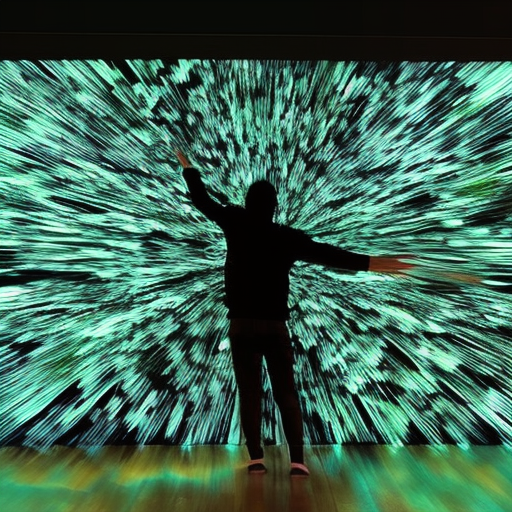Summary: Video art is a form of artistic expression that utilizes video technology to create visual and audio works. It emerged in the 1960s and has since become a significant medium in contemporary art. Video art encompasses a wide range of styles and techniques, including experimental narratives, performance documentation, and video installations. It allows artists to explore the possibilities of time, space, and movement, challenging traditional notions of art and engaging with social and political issues.
The Emergence of Video Art
Video art emerged in the 1960s as artists began to experiment with newly available portable video equipment. This technology allowed them to record and manipulate images and sound in ways that were not possible with traditional mediums. Artists such as Nam June Paik, Bruce Nauman, and Joan Jonas were pioneers in the field, using video to explore themes of identity, gender, and technology.
Characteristics and Techniques
Video art is characterized by its use of video technology as a medium of expression. Artists often combine moving images, sound, and sometimes text to create their works. The medium allows for the manipulation of time, space, and movement, enabling artists to create immersive and interactive experiences. Techniques such as video editing, layering, and projection are commonly employed to enhance the visual and conceptual impact of the artwork.
Styles and Themes
Video art encompasses a wide range of styles and themes. Some artists use video as a means of storytelling, creating experimental narratives that challenge traditional cinematic conventions. Others focus on performance documentation, using video to capture and preserve ephemeral actions and events. Video installations, which often incorporate multiple screens or projections, create immersive environments that engage the viewer in a sensory experience. Social and political issues are also common themes in video art, with artists using the medium to critique power structures, explore cultural identities, and raise awareness about pressing global concerns.
Impact and Influence
Video art has had a significant impact on the art world, challenging traditional notions of art and expanding the possibilities of artistic expression. It has influenced other mediums such as film, television, and advertising, with techniques and aesthetics borrowed from video art becoming commonplace in popular culture. The accessibility of video technology has also democratized the art-making process, allowing artists from diverse backgrounds to create and share their work.
Notable Video Artists
Numerous artists have made significant contributions to the field of video art. Nam June Paik, often considered the father of video art, used video technology to explore the relationship between humans and technology. Bill Viola is known for his emotionally charged video installations that explore themes of life, death, and spirituality. Pipilotti Rist creates immersive and dreamlike video installations that challenge traditional gender roles. Other notable video artists include Marina Abramović, Bruce Nauman, and Shirin Neshat.
Conclusion
Video art is a dynamic and evolving medium that continues to push the boundaries of artistic expression. It allows artists to experiment with time, space, and movement, creating immersive and thought-provoking experiences for viewers. With its ability to engage with social and political issues, video art remains a powerful tool for cultural critique and commentary. As technology advances, video art will undoubtedly continue to evolve, offering new possibilities for artists to explore and engage with the world around them.












